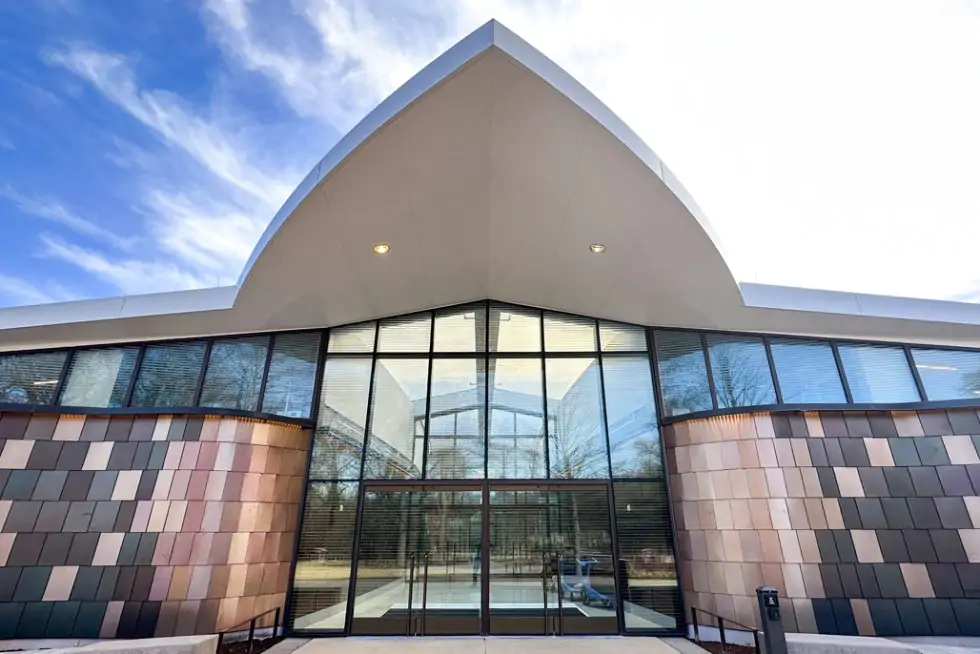Officials from the Smithsonian enlisted the expertise of students in the MA in Museum Studies program to study a real-world challenge.

With thousands of annual visitors now able to explore the newly renovated National Zoo and Conversation Biology Institute Bird House in Washington, D.C., the Smithsonian hopes to obtain the critical data necessary to understand and enhance their guests’ experience.
Erika Novak, program alumnae and now the manager of Adult Learning and Digital Content for the Smithsonian National Air and Space Museum, contacted Karina Wizevich to seek assistance from her former teacher at Johns Hopkins. Wizevich was excited to introduce the students in her Museum Evaluation and Audience Research course to this practical project.
The class, who partnered with zoo personnel – including Laura Klopfer (Head of Learning and Visitor Education), Sara Hallager (Curator of Birds), and Ray Ruskin (former Head of Exhibits) – learned of the need to create a series of evaluation tools to rate guests’ reactions to their Bird House visits. Divided into three groups, students focused on design and three-dimensional aspects of the exhibits, on the educational piece, and on marketing and audience engagement.
To date, the collaboration resulted in a detailed survey offered to visitors in the Bird House, via electronic tablets. Zoo personnel are on hand to assist with the survey completion. Future data collection may include an observation component where zoo staff and volunteers, through student-developed tracking sheets, can note where people move or congregate, stop with interest, or point out exhibition details.
Data garnered from the student-informed surveys will be used as part of the zoo’s application for a prestigious Association of Zoos and Aquariums Exhibit Award. It will also help to identify additional enhancements that encourage visitors to “live bird friendly” and to make lifestyle choices that are best for birds, humans, and the planet.
“Since this course is a hybrid of theory and methods, as well as practical application, this zoo partnership provided the students with an ideal real-world, client-interfacing experience,” Wizevich said. “This not just an academic exercise but the perfect project for my students to address a real issue with a real client. Zoo officials were also happy to have 15 graduate students from Hopkins focusing on their project. The opportunity provided a phenomenal experience for our students and the Bird House professionals to collaborate on how to best track visitors’ experiences as they made their way through these bird biomes. What was it like to be walking through these exhibits? Was it fun? Was it educational? Was it interesting? Was the experience family-friendly? Did you have expectations, and did the exhibits meet these expectations?”
The National Zoo’s Bird House, a 1928 historical building, was closed for a six-year, $69 million renovation and re-opened as a LEED Gold-certified facility in March 2025. It is the first zoo exhibition of its size to highlight the annual journeys of migratory songbirds, waterfowl, and shorebirds integral to North, Central, and South American ecosystems. The immersive new exhibit features three walk-through aviaries housing 80 species across the Delaware Bay, the lush Prairie Pothole, and the tropical bird-friendly Coffee Farm environs.
“The Bird House has become a vital space for connecting visitors with the importance of avian ecosystems and to the Zoo’s work to understand and protect migratory birds,” Klopfer said. “Working with students from Johns Hopkins’ Museum Studies program has given us valuable tools to understand how best to engage with our guests and encourage bird-friendly habits. We’re looking forward to continuing this partnership, not only to inform future exhibits but to also foster future professionals entering the field.”
With the class’s methodology contributions complete, data collection continues through April 2025 and will be analyzed by Wizevich on behalf of her students.
“It is great that I have the chance to look at the data and make it operational, and to be able to hopefully assist in bringing recognition to the zoo’s efforts,” Wizevich said. “As a faculty member, I love to see the lightbulbs going off with my students and to see the clients getting excited about the work we are doing. Our intent, as soon as the students enter our program, is that they start becoming museum professionals. We also want our students to hang on to what it was like being an average visitor. Evaluation is a way to keep that connection and bridge that gap. I enjoyed watching it all come together.”